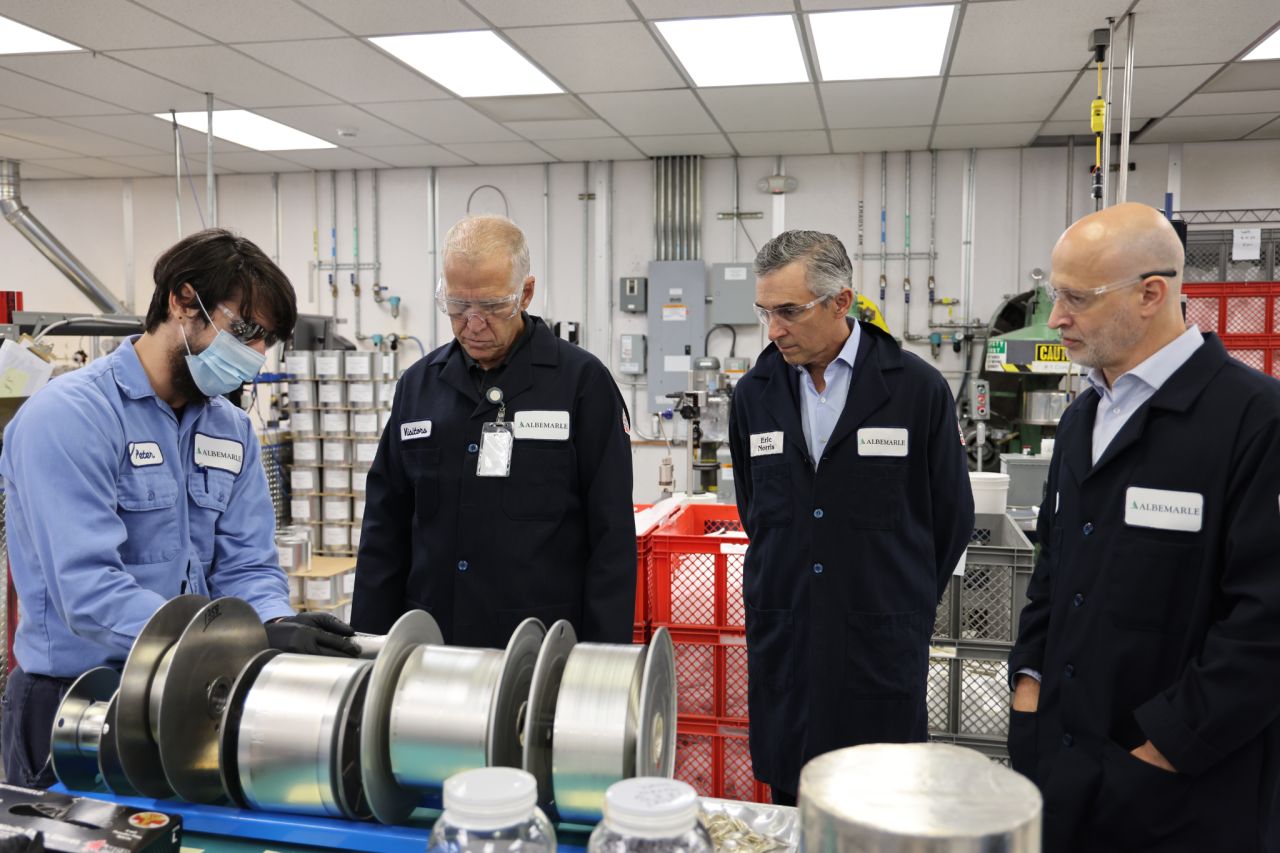At the end of May, the U.S. House narrowly pushed through a budget and tax bill that took a sledgehammer to clean energy tax credits. This includes the Section 45X Advanced Manufacturing Production Tax Credit, which encourages the domestic manufacturing of components for the clean energy supply chain, and the Section 45Y Clean Electricity Production Credit and Section 48E Clean Electricity Investment Credit, which benefit solar and wind projects. The Clean Economy Tracker has collected data about what the House reconciliation bill would mean for North Carolina if passed in its current form.
Section 45X
Since 2022, North Carolina has welcomed more than $18.4 billion in investment for battery manufacturing and created 11,682 associated jobs. For example, Toyota has announced $13.9 billion in investment in what will be its largest lithium-ion battery production hub on the continent, attracting new residents and creating 5,000 jobs with an average salary of $28,000 above Randolph County’s median wage. VinFast is investing $4 billion in an electric vehicle battery and manufacturing plant in Chatham County, creating 7,500 jobs, generating $529 million in property taxes, and helping the region transition from agriculture and light manufacturing. Dai Nippon Printing is spending $233 million to manufacture lithium-ion battery pouches in Linwood, creating 352 jobs, helping the region transition from the furniture and textile industries, and contributing $691 million to the state’s economy. Lastly, Natron Energy announced a $1.4 billion investment in a sodium-ion battery manufacturing plant, creating 1,000 jobs with an average salary of $17,000 above Edgecombe County’s median wage. The approximately $77 billion annual payroll impact will benefit an area that has seen a QVC distribution center burned down and a downsizing in operations by Pfizer.
The state has also welcomed more than $1.73 billion in investment for minerals manufacturing and created 1,360 associated jobs. Albermarle announced a $376 million investment to process and separate lithium in Kings Mountain, with plans to reopen a mine that closed in the 1990s and contribute $5 million to training programs at Cleveland Community College. Epsilon Advanced Materials is investing $649.9 million in a graphite anode material plant that will create 500 jobs and contribute $1.3 billion to the state’s economy.
Unfortunately, the House reconciliation bill would phase out the Advanced Manufacturing Production Tax Credit for wind components after 2027 and all other components after 2031. Many of the above facilities would qualify for this Section 45X tax credit, and they may not proceed if it is scaled back, even though these new positions were set to boost the state’s workforce by 4.4%.

Photo Courtesy Albermarle Corporation
Section 45Y and Section 48E
North Carolina currently has 15.21 GW of operating clean power capacity and 0.21 GW of solar photovoltaic capacity under construction. The state also has plans for an additional 1.21 GW of solar and battery projects. Some solar highlights include the 110 MW American Beech Solar project, the 93 MW Sweetloaf Solar project in Halifax County, and the 80 MW Stevens Mill Solar project in Wayne County.
The House reconciliation bill would phase out both the Clean Electricity Production Tax Credit and the Clean Electricity Investment Tax Credit after 2028, to be finished before 2032. However, eliminating these Section 45Y and Section 48E tax credits would diminish companies’ ability to build and produce clean energy, thereby jeopardizing these types of projects and the associated construction and operations roles. It would hurt Republican districts in particular, which are home to 76% of the clean energy projects in the state. It would also diminish the state’s ability to meet electricity demand, which is projected to rise by 25% by 2035.

Photo Courtesy Duke Energy
North Carolina and the rest of the country will suffer without these tax credits. If the bill passes, Energy Innovation estimates 830,000 lost jobs nationwide, particularly impacting Republican districts, where 80% of domestic clean energy projects have been built. Consumers would see energy bills that are 50% higher and would pay $33 billion more per year. The Clean Energy Buyers Association estimates North Carolina residences, in particular, would pay $224 more per year on their energy bills by 2029. The national GDP would drop by $1.1 trillion by the decade’s end.





